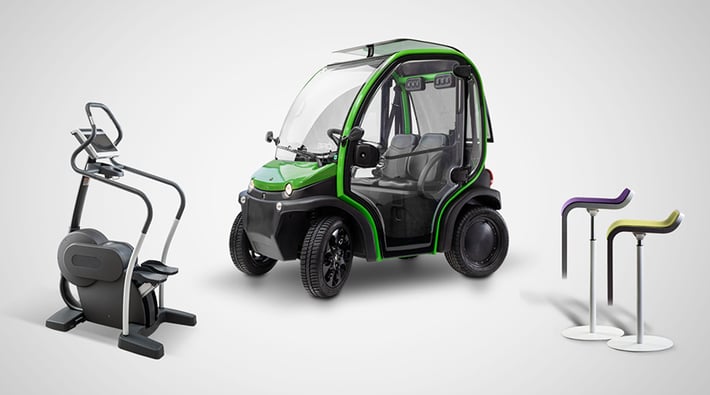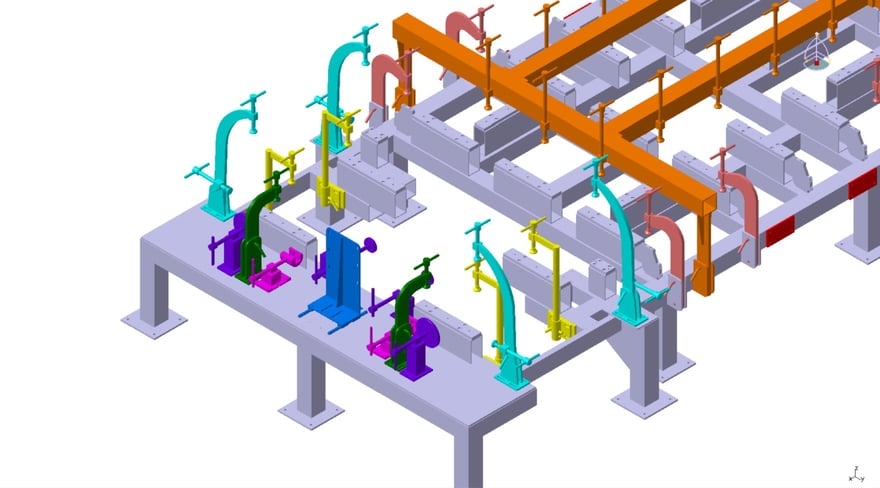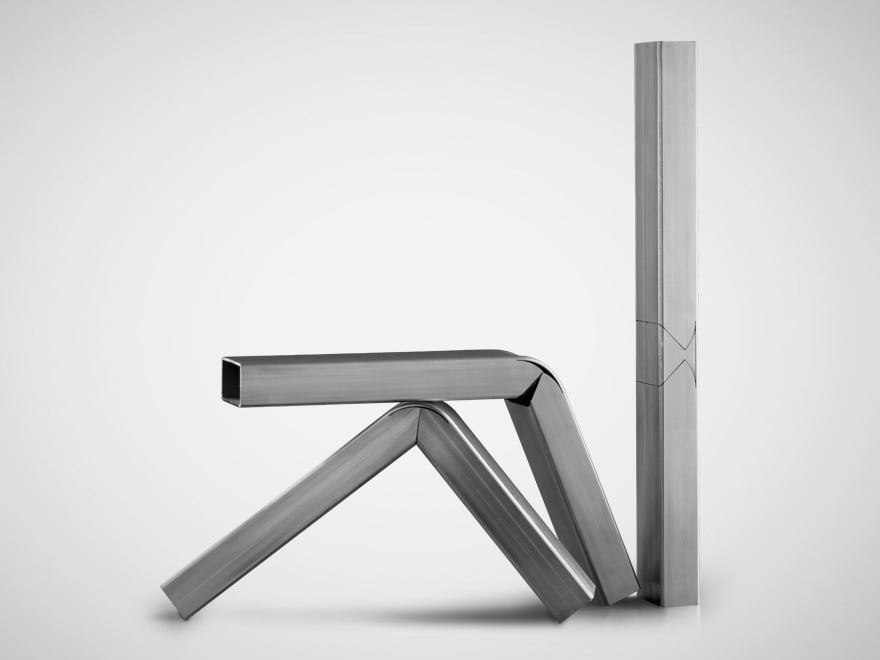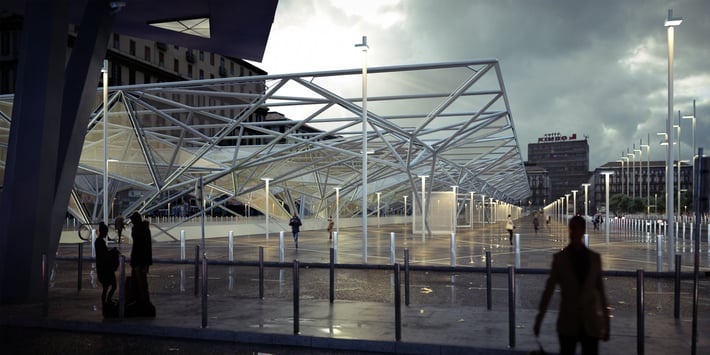Structures and frames made of metal tubes have long since become widespread in all industrial sectors. Their presence and complexity have gone hand in hand with the availability of tools and technologies capable of designing and implementing them in a way that makes them functional but also, and above all, cost-effective.
Light and robust, of high-quality appearance and in a wide range of shapes and sizes, tubes have inspired generations of engineers in the most diverse fields. Furniture, mechanics, automotive, hydraulics, just to name a few, without forgetting the major construction sector, that has experienced the most significant growth in recent times.
This is how some objects that have improved the quality of our lives (a), others that have changed the way we move (b) and others still that we can admire today in modern art museums (c) have come to be.
 a) Bent and laser-cut tubes on fitness equipment, b) tubular frame on electric vehicle c) design chair made with steel tubes.
a) Bent and laser-cut tubes on fitness equipment, b) tubular frame on electric vehicle c) design chair made with steel tubes.
The traditional approach to frame creation
The traditional approach to making each of these applications starts from a project followed by the necessary mechanical machining sequences carried out on each tubular component, such as cutting to size, drilling, milling and surface finishing treatments. The next step is assembly, i.e. the correct reciprocal positioning of all the parts respecting the distances and angles so that an overall result is obtained in line with the geometric tolerances of the project with the appropriate welds.
It is precisely at this stage that difficulties and unexpected events that increase the manufacturing cost and time of the product may be encountered.
These difficulties are well known to engineers. Every line they draw contains their knowledge of the features of the raw material. They are aware of the limits of the technologies that will be used, estimate the costs and time required for implementation and determine the degree of confidence in the quality of the final result.
It is this knowledge that steers design choices and whether to opt for innovative solutions, according to the context and the permitted risk margin.
The use of high-quality tubes is obvious in applications requiring high-quality appearance, but the geometric precision of assembly at the junction or supporting points between the various parts is equally crucial. In the case of structural applications in which large-sized and thick tubes are used, the geometric precision of the various parts will depend on the quality of the initial material and the construction tolerances of the profiles used (typically much higher). It may, therefore, be necessary to mechanically adjust the joint or supporting points during installation.
In both cases (and in all those between these two extremes) a considerable effort will be required to proceed successfully to prepare and apply the appropriate welding jigs.
 Jig for frame welding.
Jig for frame welding.
Welding jigs
To assemble a frame, it is very often necessary to make a jig with many fixing points and mechanical constraints. This operation requires experience, time, and precision to ensure the correct positioning and orientation of all parts before final welding.
The preparation of the welding jigs is more expensive (on the single part) the lower the number of pieces to be built and involves a set-up time for each frame to be welded.
In the case of products to be made in a single piece (as is the case for large constructions), the costs of the assembly and welding phase have a great impact on the entire project, aggravated as it is in many cases by the need to correct the size of the pieces due to the low precision of the cutting technologies used and the need to grind the cut surfaces by hand due to thermal alterations (caused by cutting) that prevent them from being welded immediately.
 Grinding of a tube cut with a thermal process.
Grinding of a tube cut with a thermal process.
Laser cutting simplifies the design of a tubular structure
The scenario improves when the tubular components are made by laser cutting. It is well known that higher accuracy can be achieved on a laser cutting system. Moreover, it is not necessary to adjust the cut surfaces because the thermal alterations induced by the laser are minimal and do not affect the immediate possibility of welding (unlike other thermal cutting technologies).
But there is another major advantage in using the laser that is less obvious and still little known.
It is the possibility of obtaining shapes and punches which create mechanical constraints and joints between several parts without the need for additional equipment on the tubes. This reduces the complexity of welding jigs and simplifies the task of imposing distances and angles between frame components during assembly.
.
 Cut and bent process to reduce the number of components in a frame.
Cut and bent process to reduce the number of components in a frame.
Joints
Of various shapes, through and supporting, bayonet joints and cut-bends are some of the solutions that the laser solution can make automatically on the tubes to interlock the reciprocal position of the pieces of a frame.
The application of these construction facilitators does not require special skills if specific software tools for frame design and tube processing are used. Artube (the specific CAD/CAM for the tube reserved for BLMGROUP customers) offers a library full of ready-made interlocking solutions. Artube can also be used to design further solutions on your own; the result of your own creativity or the particular needs of the application. The fitting library becomes the natural completion of the design features of frames of any complexity.
Small and large projects that can be designed inside Artube or, as it happens, often designed in other CAD environments and then imported into Artube (through convenient exchange formats), to be completed with the further jobs listed above.
 Garibaldi square in Naples, roof of tubular frames.
Garibaldi square in Naples, roof of tubular frames.
Final thoughts
Designing and manufacturing tubular structures using laser cutting technology and adding the advantages of joints gives engineers more freedom of design, the possibility to obtain precise assemblies more easily and quickly with an appreciable saving on construction costs.

